No products in the cart.
Aloe Vera plants are commonly grown indoors for their medicinal aloe. Still, with more than 300 species, not all have medicinal value. Out of all of them, four to five cultivars have healing to health properties.
Aloe vera plant is a spectacular plant to grow since it’s packed with vitamins and antioxidants that moisturize, heal, and rejuvenate, leaving your skin naturally radiant and glowing.
Today we will look at some popular Aloe Vera plants and how to care for them.
More About Aloe Vera Plant
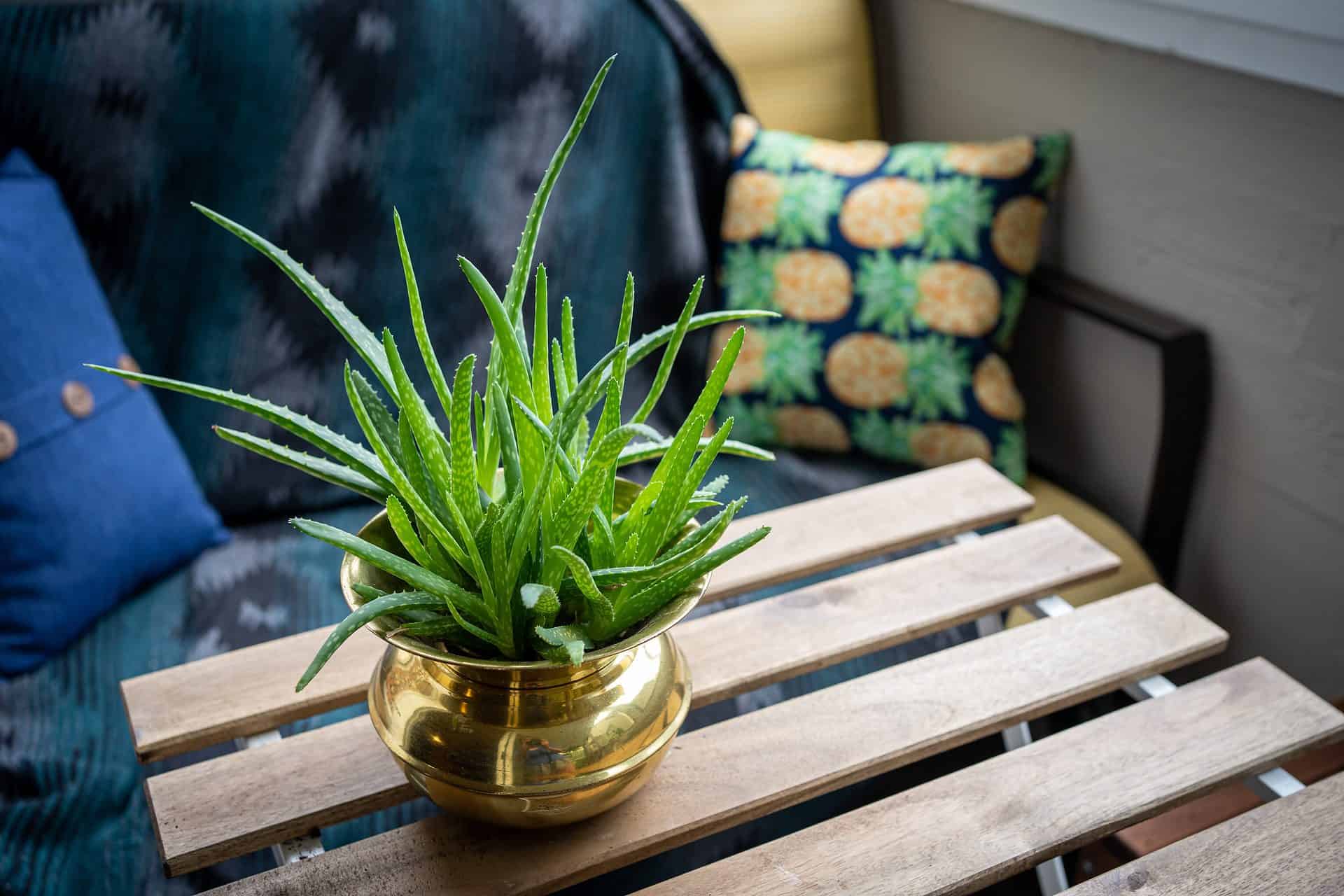
The Aloe belongs to the Asphodelaceae family with common names aalwyn (Afrikaans), aalwee (Dutch); hlaba, lekhala (Southern Sotho); icena (Ndebele); imboma (Zulu). Most aloe plants have spiny leaves forming a neat rosette with candle-like inflorescences in red or vibrant orange hues.
These plants brighten up any dull winter garden and can vary in growth forms from small to tall. You find them with a single stem to branched trees or tangled shrubs. The leaves form terminal clusters or rosettes armed with sharp, soft teeth.
The flowers can have tubular forms, but some aloe has curved or bell-shaped flowers—the blooms you see primarily in winter, while the grass aloe flowers in spring or summer. Once the bloom cycles complete, it forms capsules that dry out to split open and release black-angled seeds with wings to disperse with the wind.
Some aloe plants from the Mascarene and Madagascar islands develop berries that do not become woody or completely dry. Neither are the leaves succulent as with other aloes. In South Africa, the aloes are protected, but there are a few exceptions.
Still, compared to most aloes, the aloe vera plant has become one of the best indoor succulent plants with healing properties and originates from the Arabian Peninsula. Still, the Aloe ferox is indigenous to Southern Africa and used in the pharmaceutical and cosmetic industries.
Famous Types Of Aloe Vera Plants
The majority of aloe species you can grow as houseplants, and with proper care with a suitable location, they can thrive. Here are some popular varieties to provide a beautiful display in the home or garden.
Torch Aloe (Aloe arborescens)
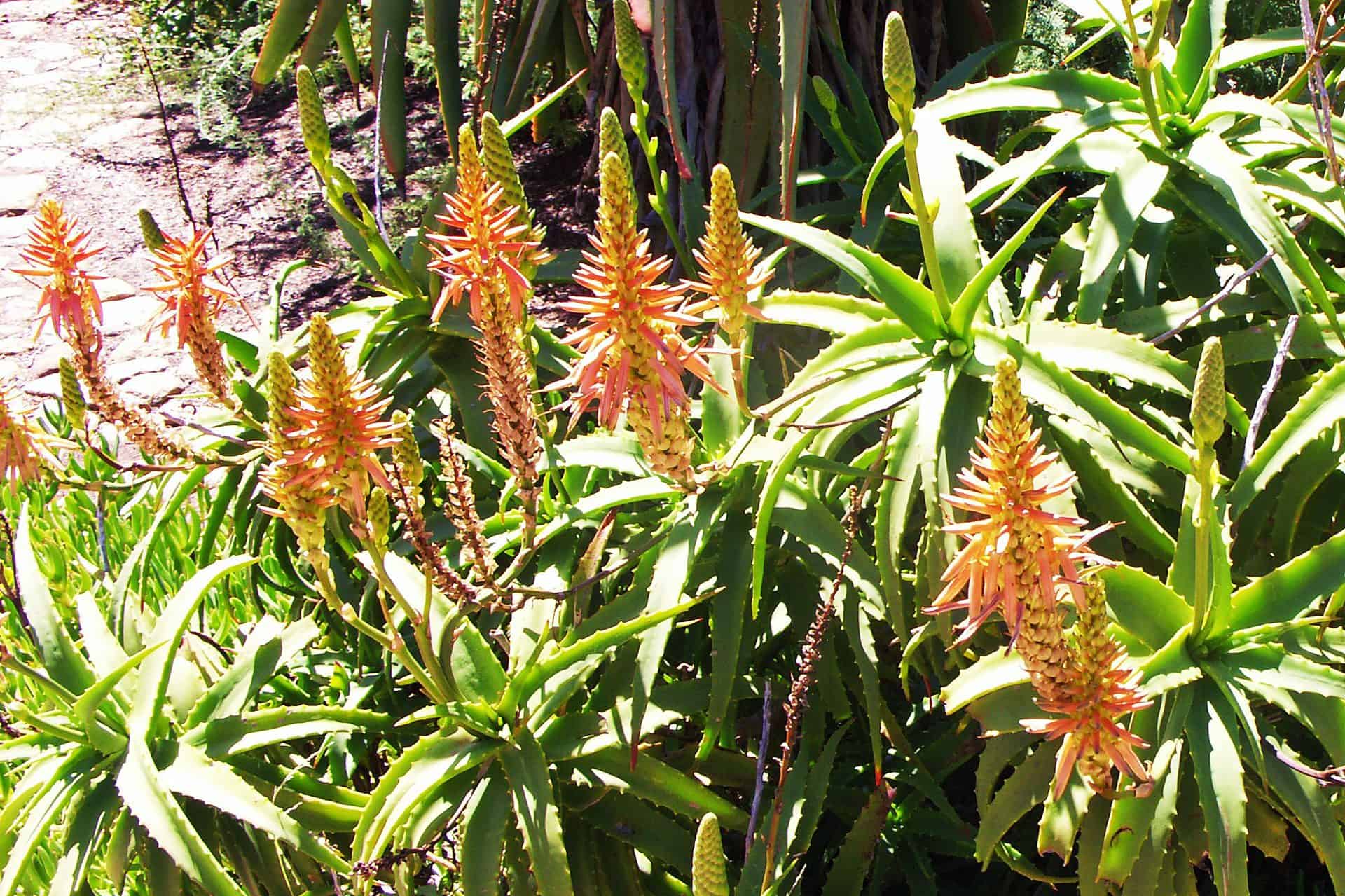
The candelabra or krantz aloe has branches forming a candelabra hence the name. It is a tree aloe that can grow old, reaching up to six feet tall. It forms bare pseudo trunk stems, and the aloe plant leaf is toothed at the end.
If you grow it long enough at home, it produces side shoots in three years you can propagate. The aloe plant can tolerate short periods of frost and has some healing properties like the aloe vera plant.
Still, you should not consume the plant as it is as toxic as most other succulents in the genus.
Tiger Tooth Aloe (Aloe juvenna)
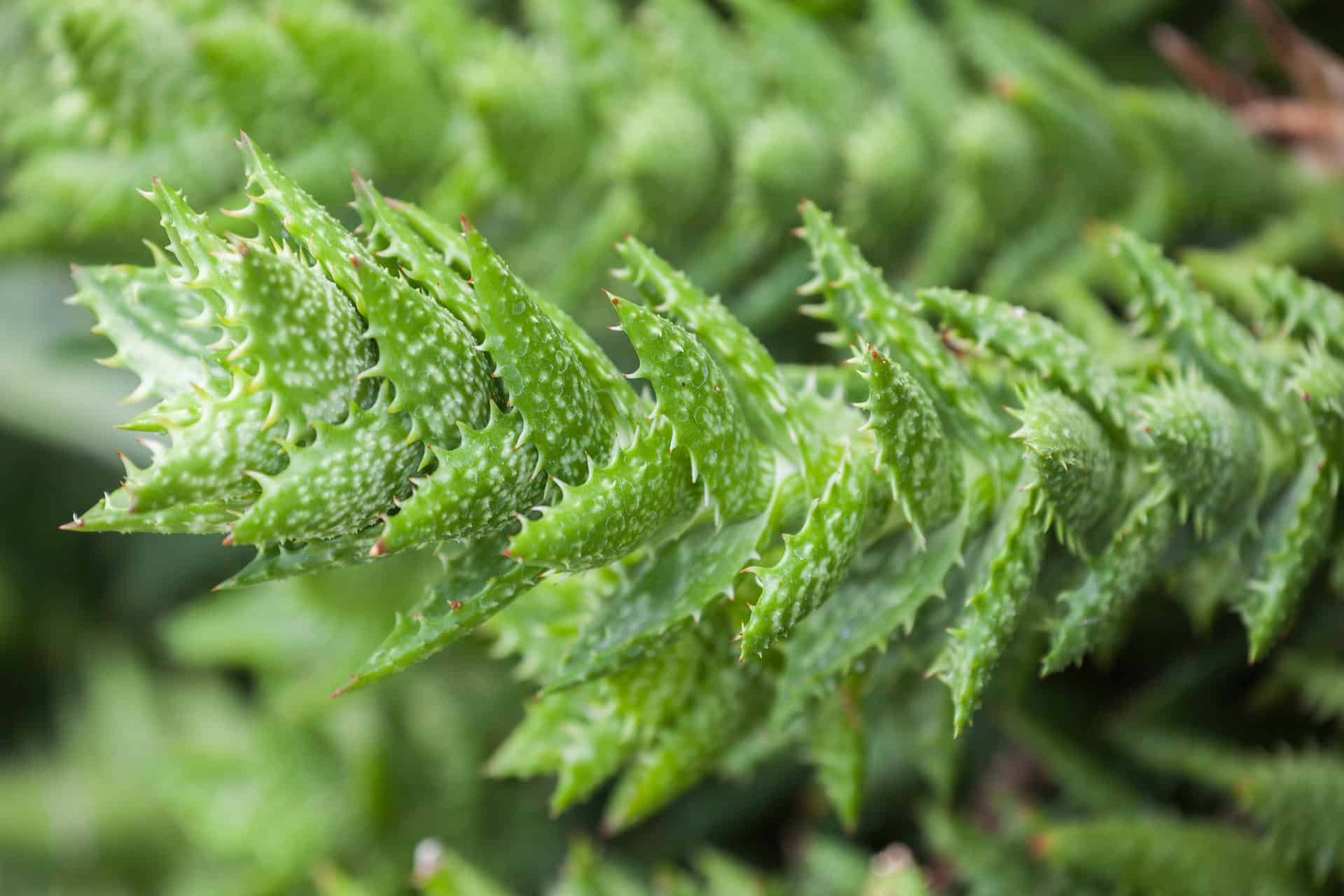
The miniature succulent plant grows with multi-branched stems creating a ground cover. The aloe leaves are flecked with green to cream-white spots on the surface, while the leaf margin has teeth. The rosette changes color to brownish bronze during the summer in the sun.
The flowers are coral pink, and it blooms in warm temperatures.
Lace Aloe (Aloe aristata )
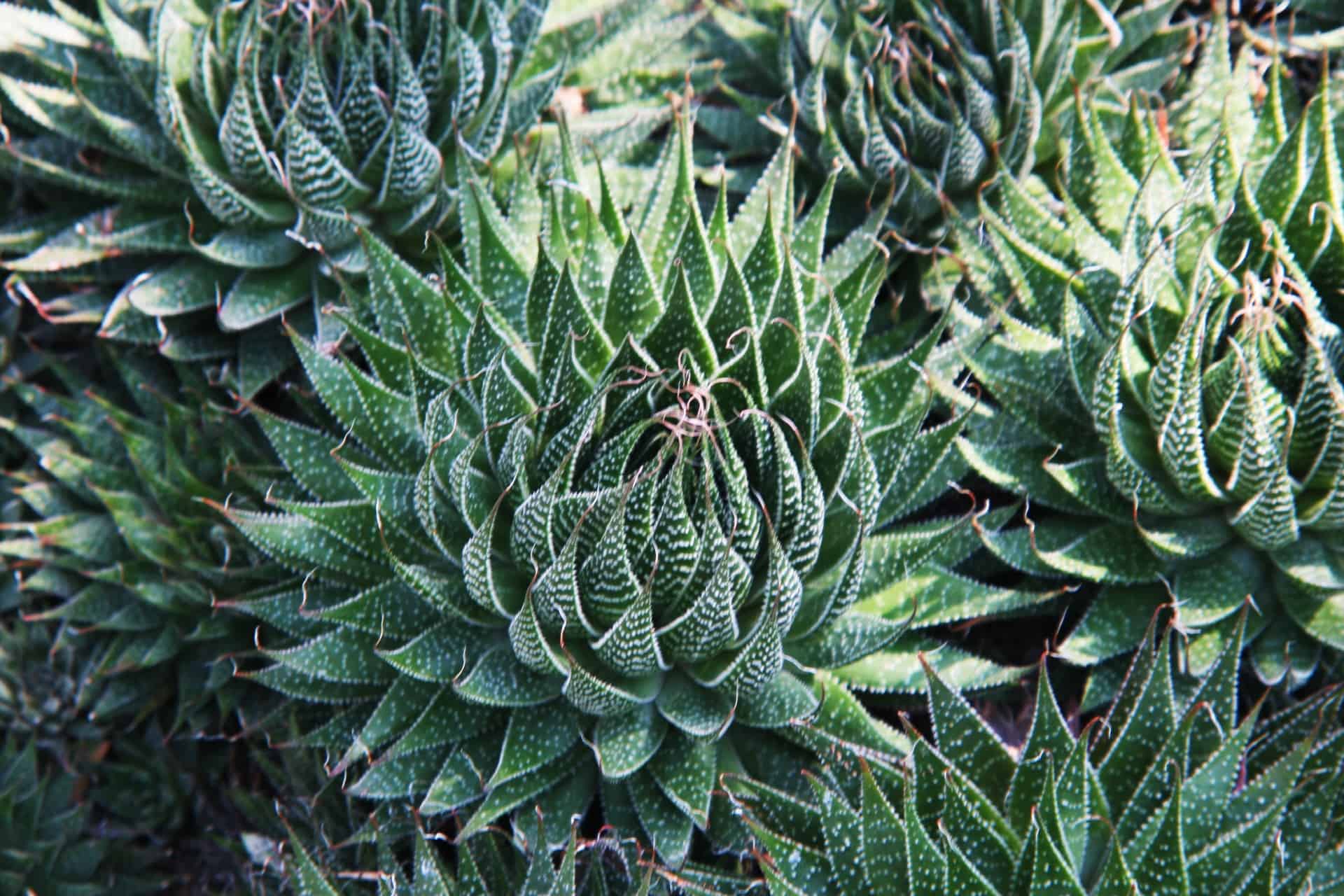
The lace aloe or guinea fowl aloe has a spherical shape and is a dwarf variety that is stemless. The foliage is edged with white teeth. In late spring, it blooms orange flowers while mature plants develop a lot of offspring you can propagate.
It is a poisonous aloe with no health benefits.
African Aloe (Aloe africana)

The plant grows with an erect stem with a skirt of dry leaves. The foliage forms an apical rosette with a gray-green surface and small reddish teeth. It blooms tubular flowers and develops winged seeds.
The flowering time is in winter and early spring.
Spiral Aloe (Aloe polyphylla)
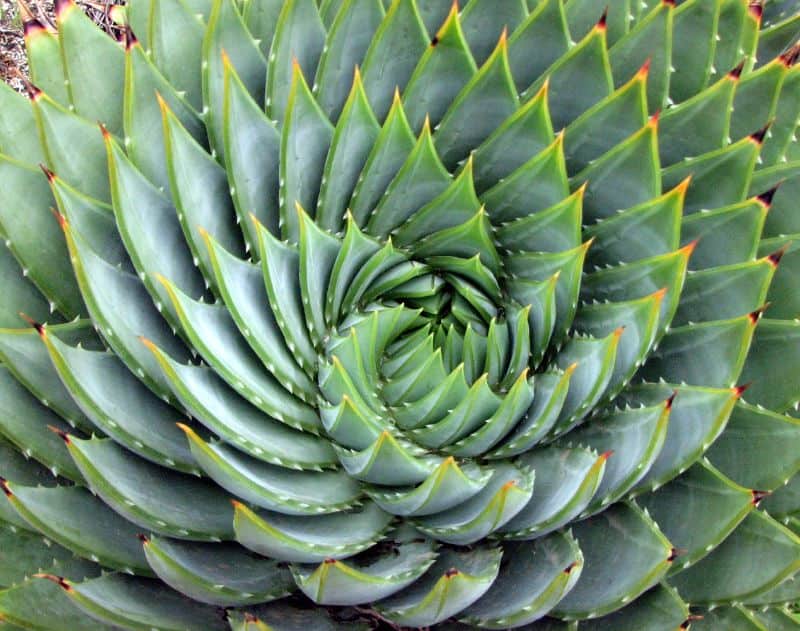
The spiral aloe has a gorgeous leaf arrangement that is short and egg–shaped with a sharp point. You find the leaf tips in purple, and it forms a distinctive rosette not seen in young plants.
The sap of this plant is toxic, and you should not apply it to your skin or consume it.
Aloe Vera (Aloe barbadensis)
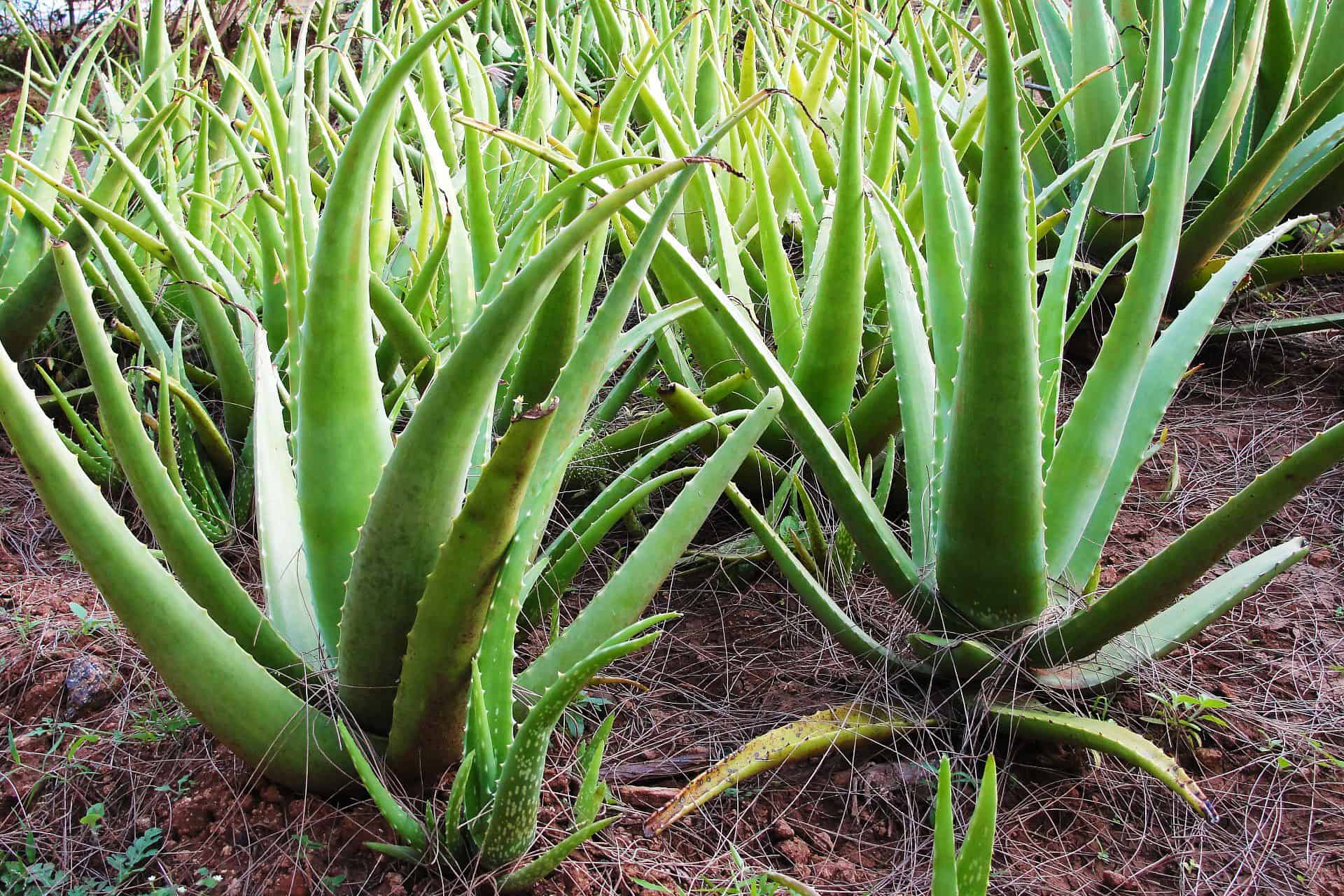
This is the most common aloe vera plant and is a true aloe but rarely used. The flowers are yellow-orange. Yet, the common plant found in most homes is the Aloe barbadensis miller, which is a tropical succulent but toxic when consumed.
While the gel is used to soothe skin irritations and sunburn.
Red Aloe (Aloe cameronii)
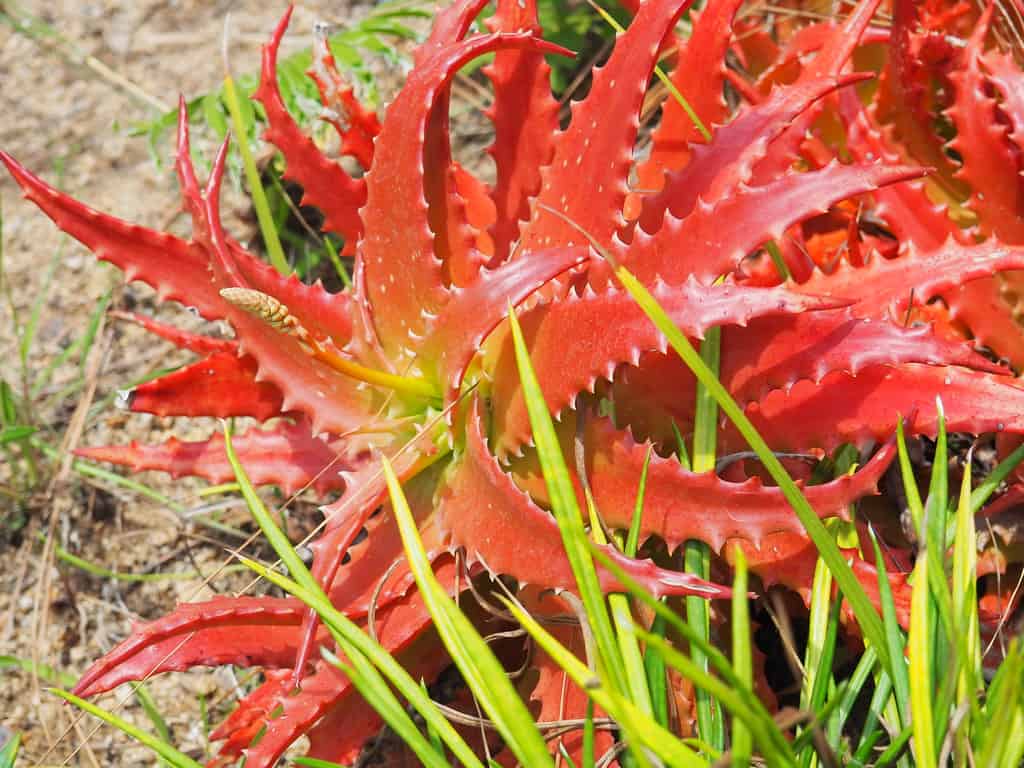
The red aloe is one of the most attractive aloe vera plants. The plant gel is also used to treat sunburn, scrapes, and insect bites. It grows with an upright stem forming an open rosette and is an evergreen succulent.
The curving leaves range in rainbow colors and are a great first aid plant.
Soap Aloe (Aloe maculata)
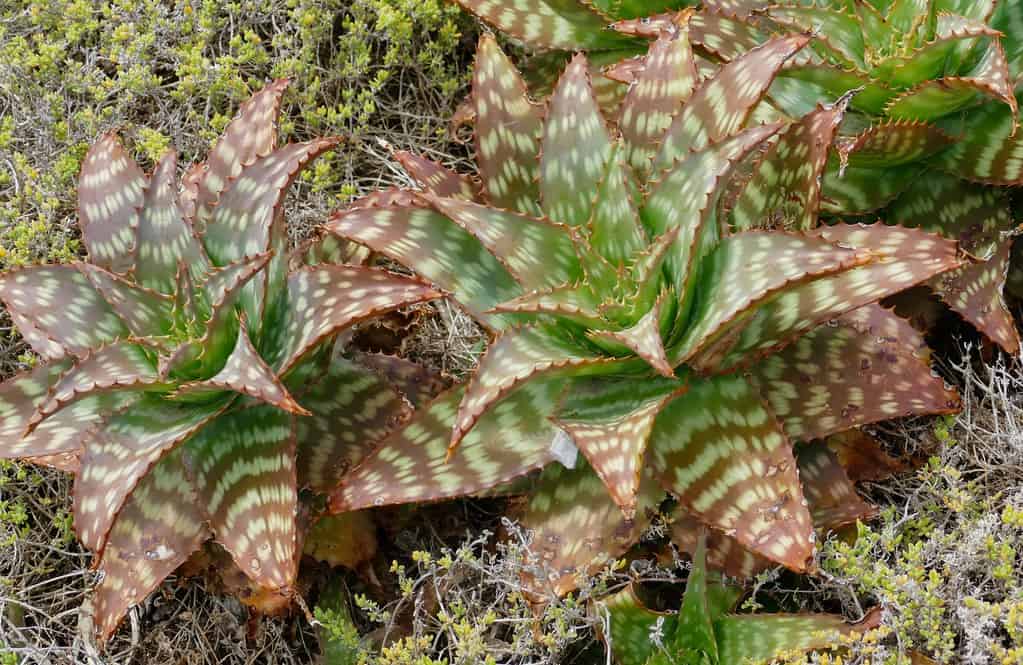
Compared to the other aloe veras, the soap aloe has a flat–topped inflorescence with colored flowers. It grows broad triangular leaves that vary in shape and length. The raceme can have up to six branches, and the flower color can be yellow, red, or orange.
The flowering time varies throughout the year.
Cape Aloe (Aloe ferox)
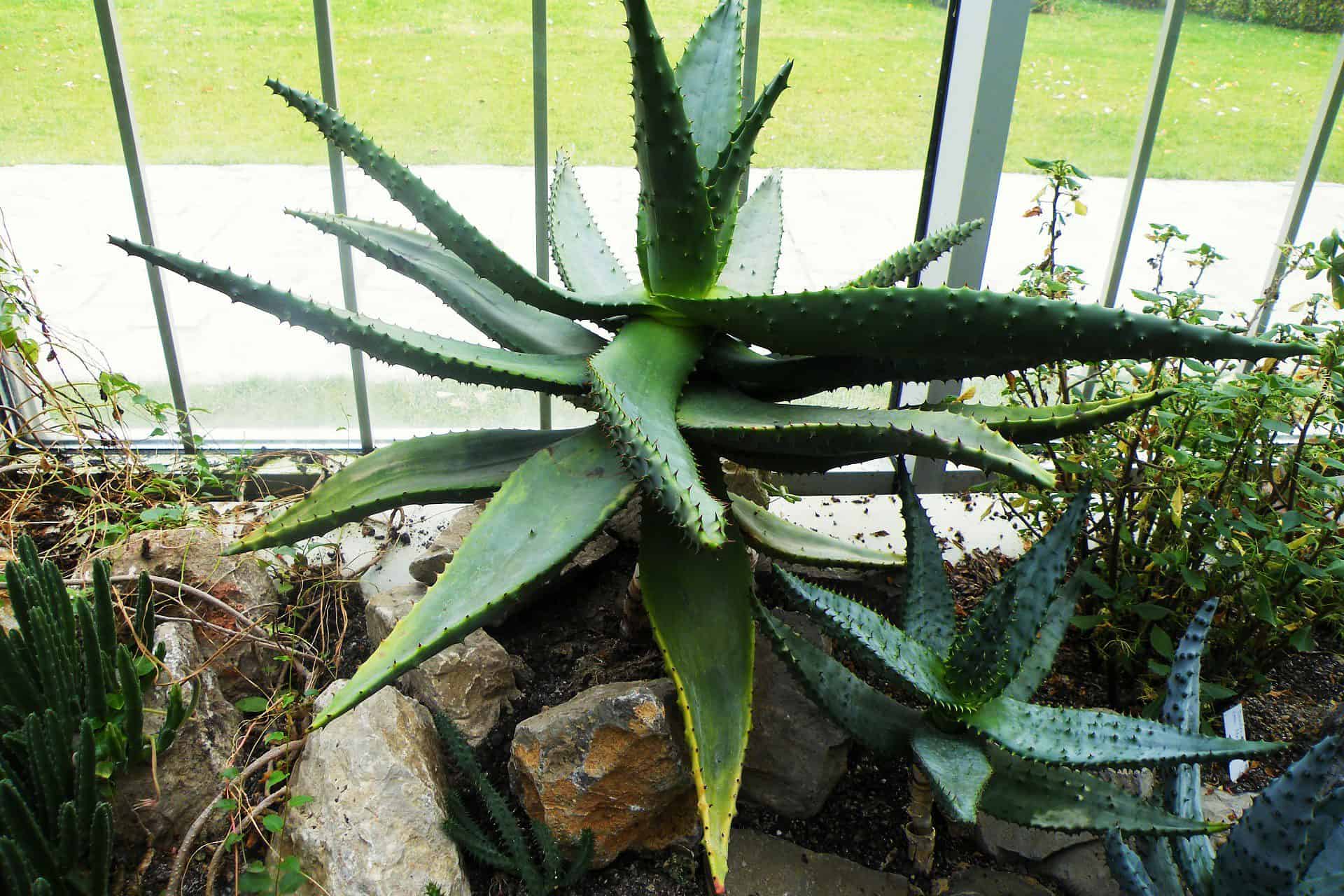
The aloe vera plant comes from South Africa and is known as the bitter aloe. It is a tree aloe forming a pseudo trunk with matte green to reddish leaves. The wrinkled edges are brown, and it has wound-healing properties.
The thick fleshed leaves produce a lot of gel for minor burns and other ailments and are recommended as a soothing gel.
Mountain Aloe (Aloe marlothii)
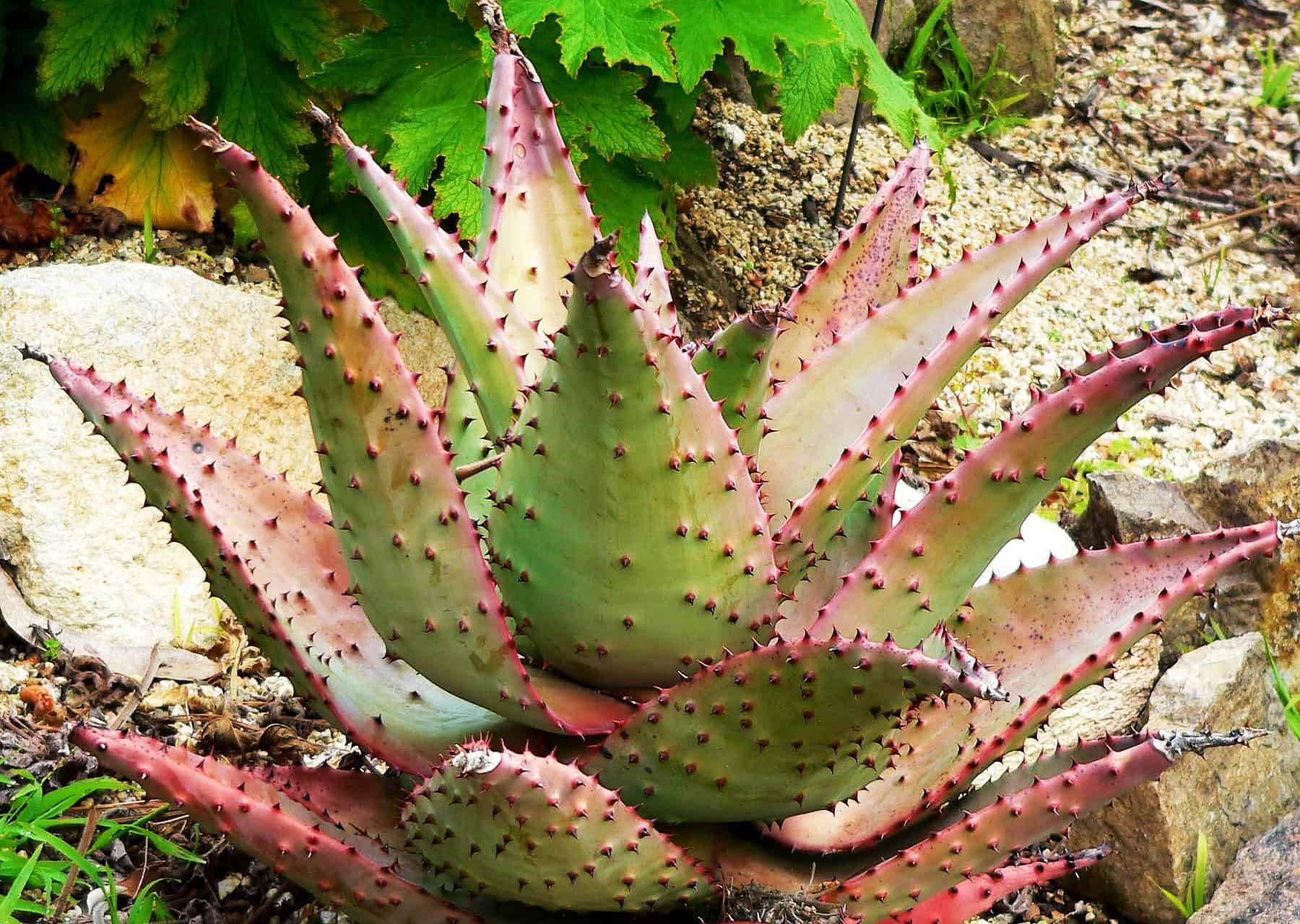
The aloe plant is iconic in South Africa, blooming bright splashes of color. The aloe is primarily used in landscaping and grows with a single stem upright with a wide rosette. The leaves are waxy in gray-green with reddish-brown spines.
It is a hardy plant that flowers in fall to spring in bright orange but can vary in red or yellow. These outdoor plants store water for dry spells and can handle freezing temperatures.
Gold Tooth Aloe (Aloe nobilis)
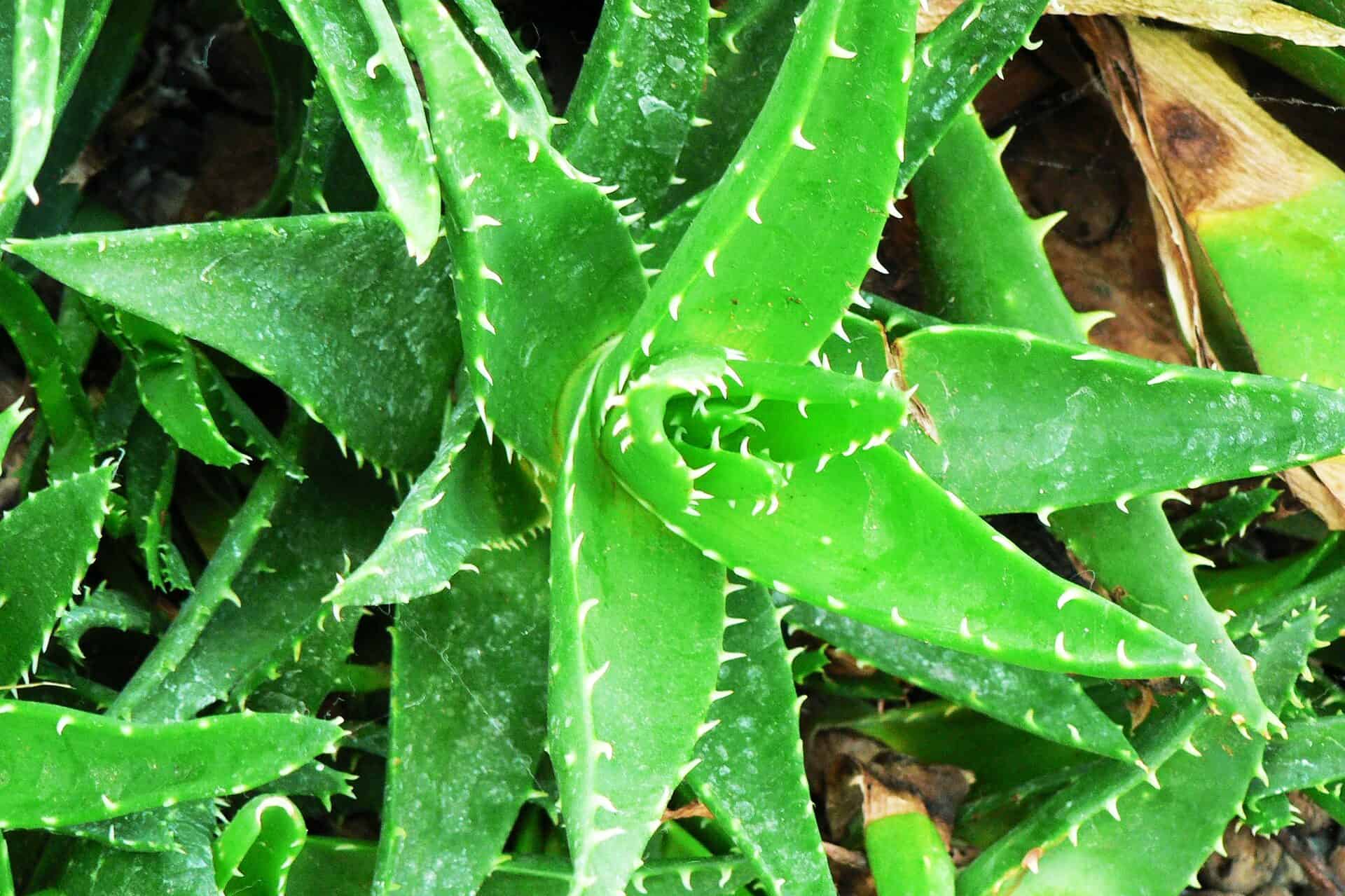
While the spines on this succulent look mean it will not harm you. The aloe has green leaves that turn orange under stress in the sun. The plant is deer-resistant and attracts pollinators with red blooms in summer.
Still, do not get confused with the Aloe perfoliata, as the two look similar, but the Gold Tooth Aloe is a lighter green and smaller.
Sunset Aloe (Aloe dorotheae)
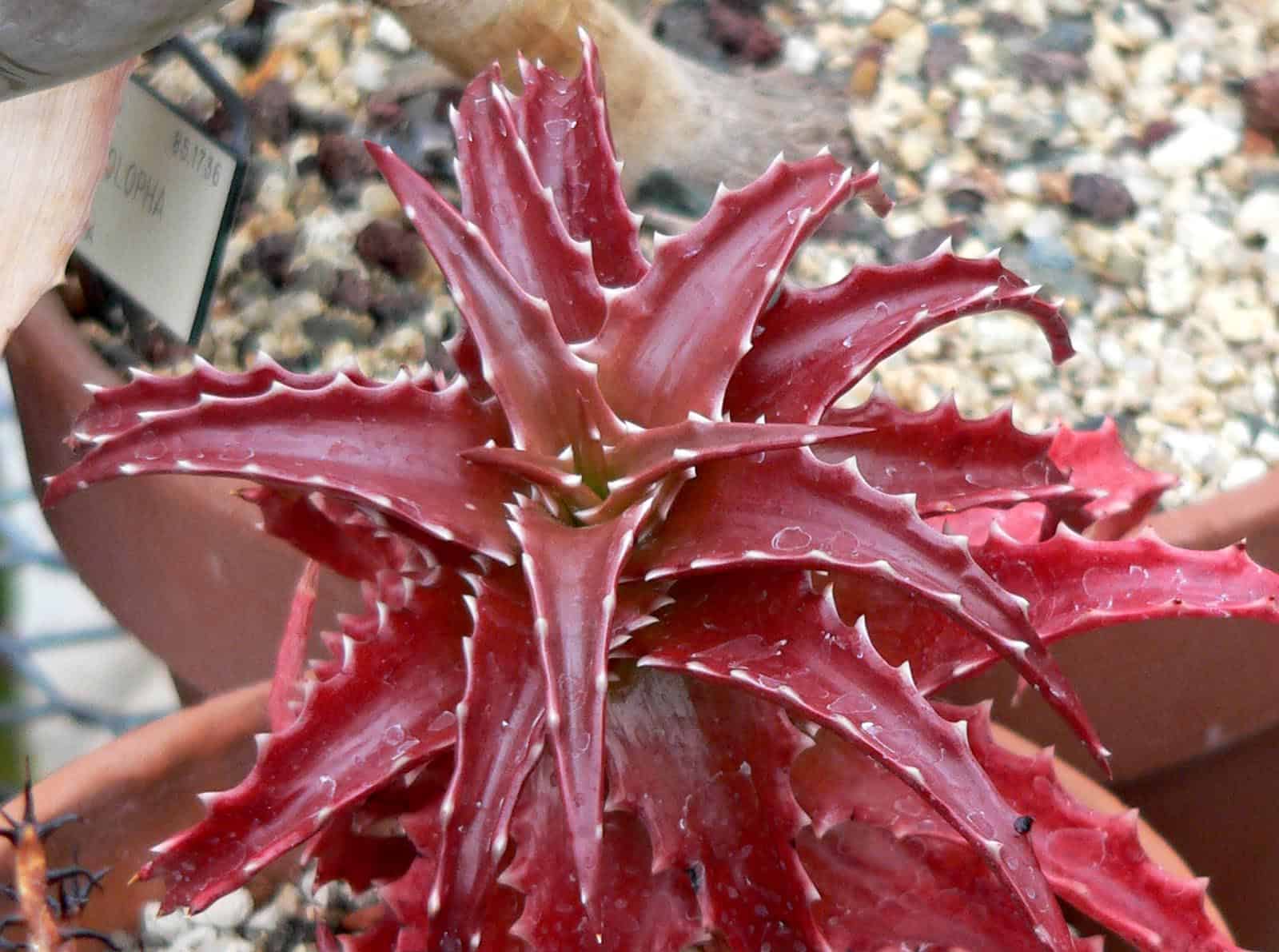
The aloe has gorgeous colored clumps of rosettes growing 20 inches wide on short stems that are flat and round. The foliage color is greenish yellow and bright orange-red with white spots on younger plants. In winter, it displays a flower spike unbranched with dark buds and green tips.
As the buds develop, it turns into salmon-orange flowers with greenish-yellow tipped petals.
Climbing Aloe (Aloiampelos ciliaris)

The aloe is sparsely branched, and a climber with multi stems becoming rounded with a swollen caudex with gray bark. It grows shallow roots that swell from the base. There are white teeth around the leaf base, and the leaf sap is not bitter compared to other aloes.
It develops a tubular flower followed by a fruiting capsule and happens throughout the year with a peak in spring.
Short-Leaved Aloe (Aloe brevifolia)
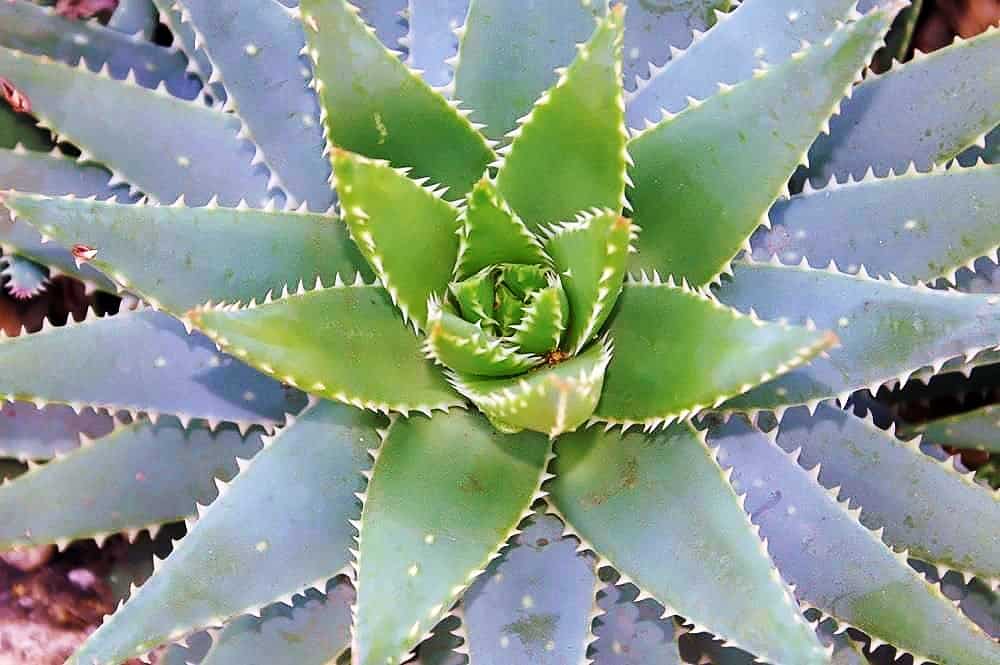
Here we have a stemless succulent perennial and endemic to South Africa. These plants form groups with dense rosettes. The foliage is triangular with gray-green color.
The leaf surface has no spots, but the lower surface does with spines. The cone-shaped racemes are sparse lower down with densely packed buds on the hidden bracts. You find the flowers in different shades of yellow or red.
Snake Aloe (Aloe broomii)
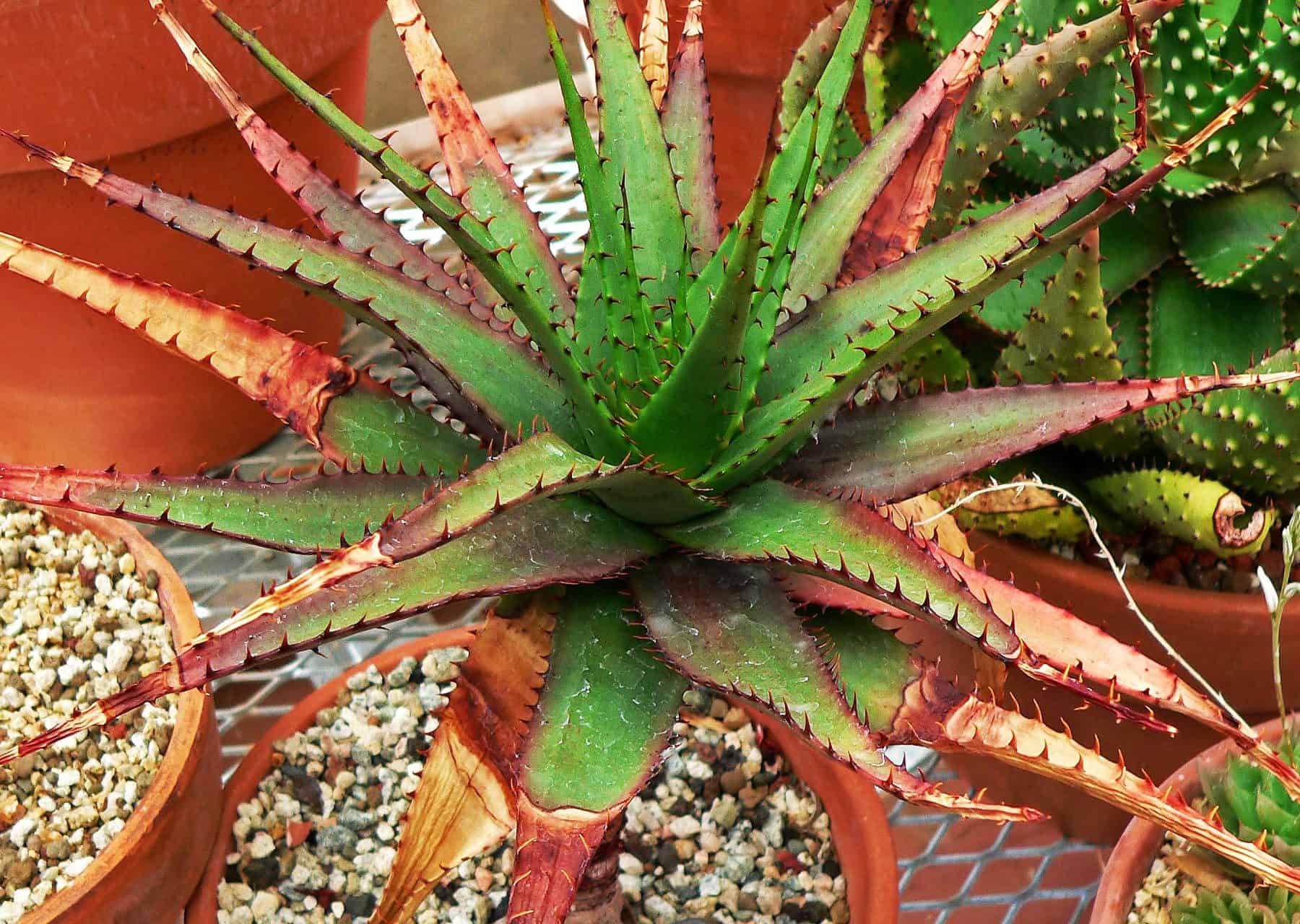
Now, if you want an aloe with a peculiar shape, it is the snake aloe. You cannot see the buds and flowers until it opens. The plant is short-stemmed and grows a solitary head forming rosettes with a green color and reddish-brown teeth.
Coral Aloe (Aloe striata)
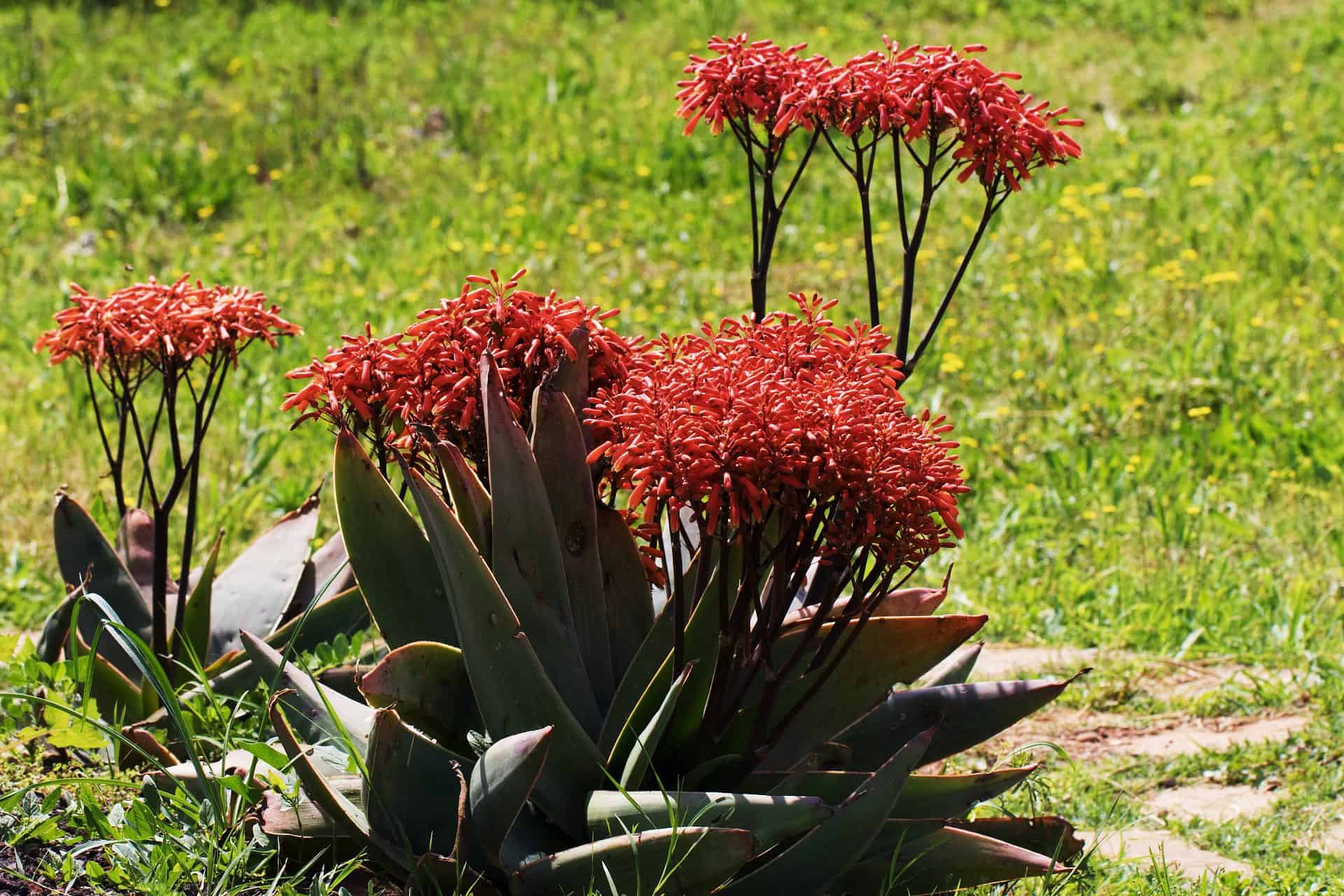
It is a stemless aloe with blue-green foliage and coral–red flowers making its appearance in the winter months. Three subspecies are spread over South Africa’s plains and are not commonly found elsewhere.
Fan Aloe (Aloe plicatilis)
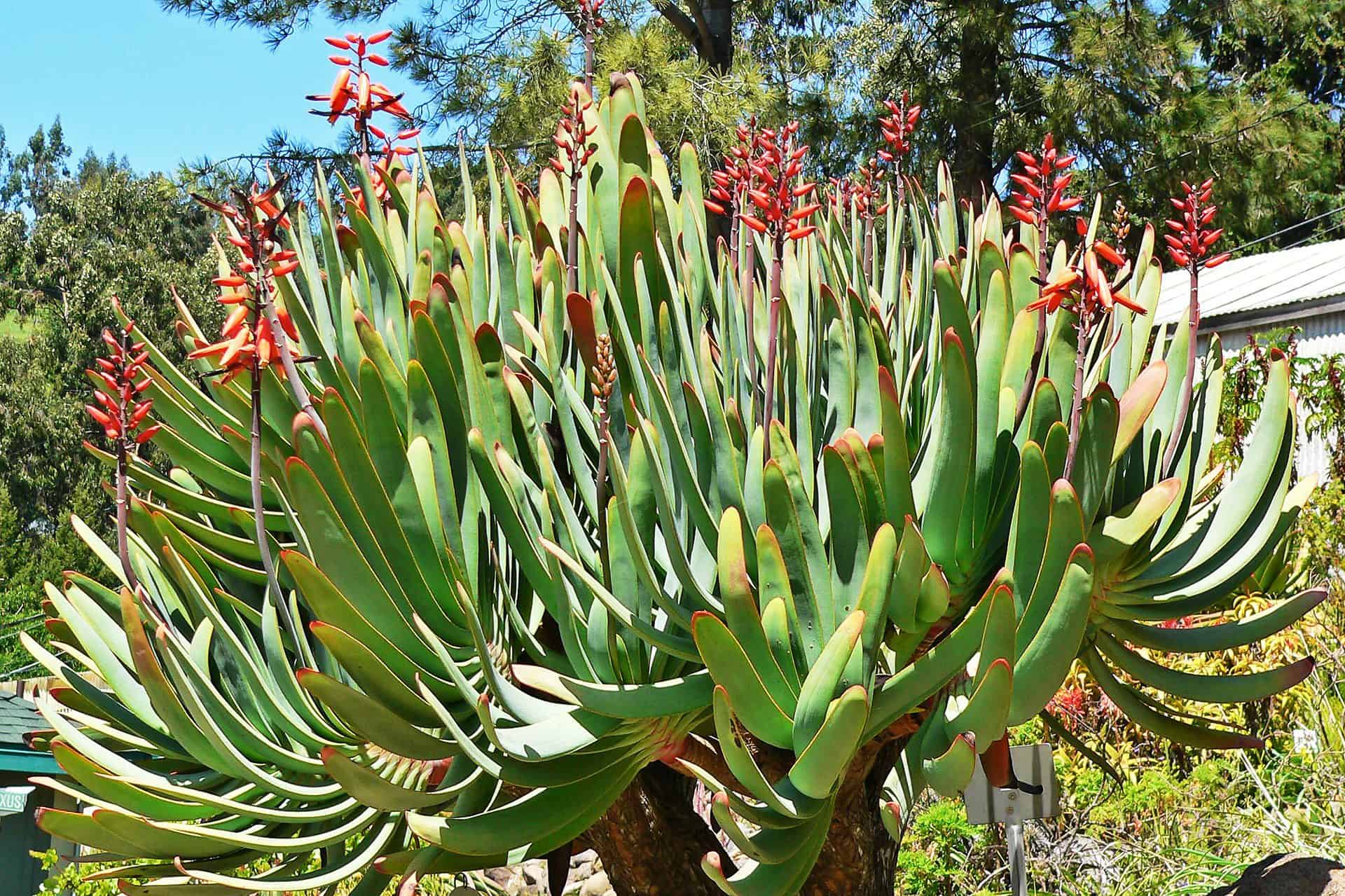
Another unique aloe plant is the fan aloe, with its fan-like appearance. The aloe forms a small shrub or tree with blue-gray leaves. Sometimes it displays orange tips, and the old leaves do not cling to the plant but fall off.
Red Hot Poker Aloe (Aloe aculeata)
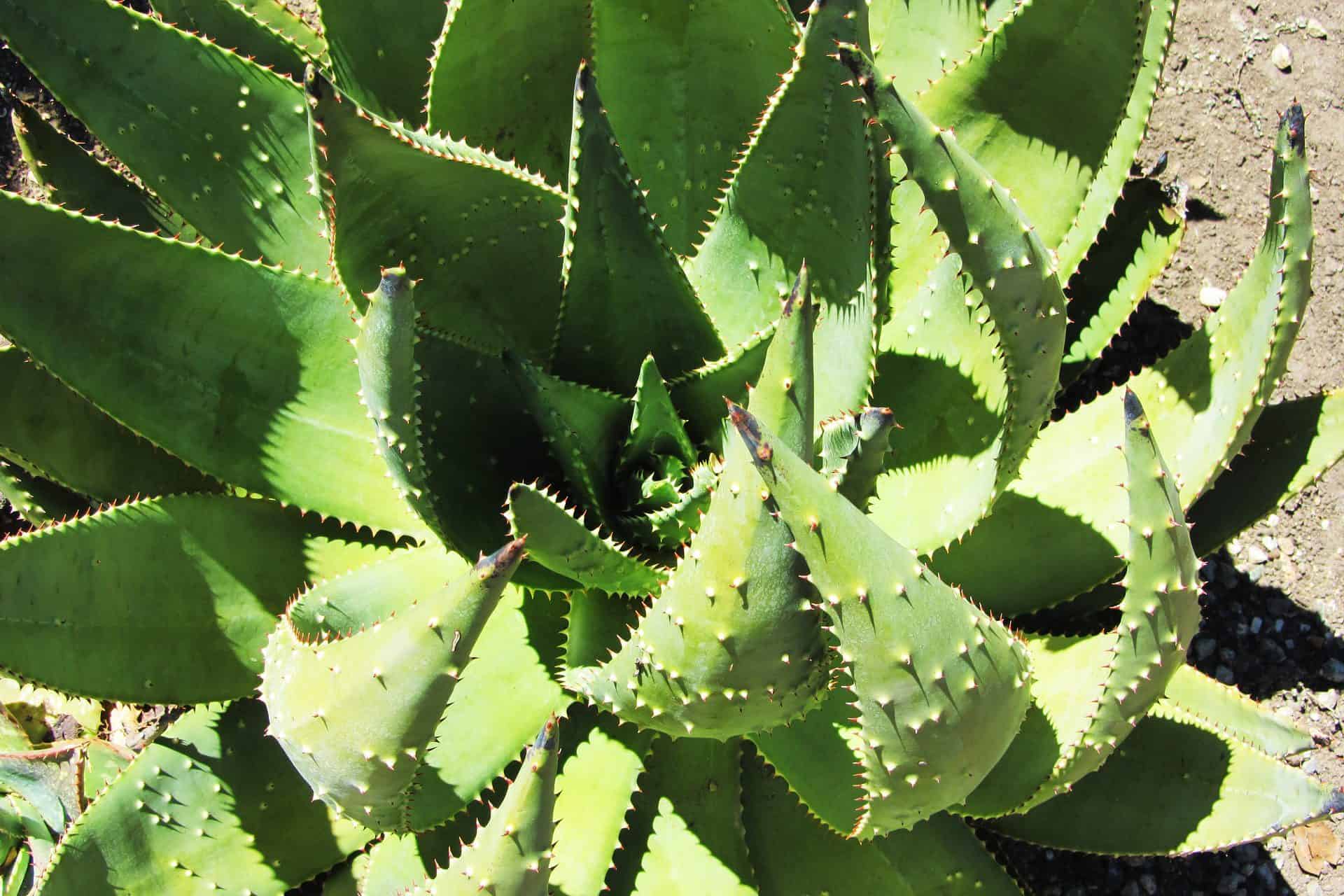
The Red Hot Poker Aloe has reddish-orange tubular flowers that attract pollinators. The leaves are green and turquoise, with an arching rosette forming a bowl. You can plant them in a raised bed, decorative pot, or rock garden.
Aloe Vera Plant Care
Whether you grow the Aloe Vera plant for its aloe vera gel, aloe vera juice, or any other cultivar in the genus, the care for Aloe Vera is the same. So, let’s look at the basics when growing Aloe Vera and other species.
Soil Needs For Aloes
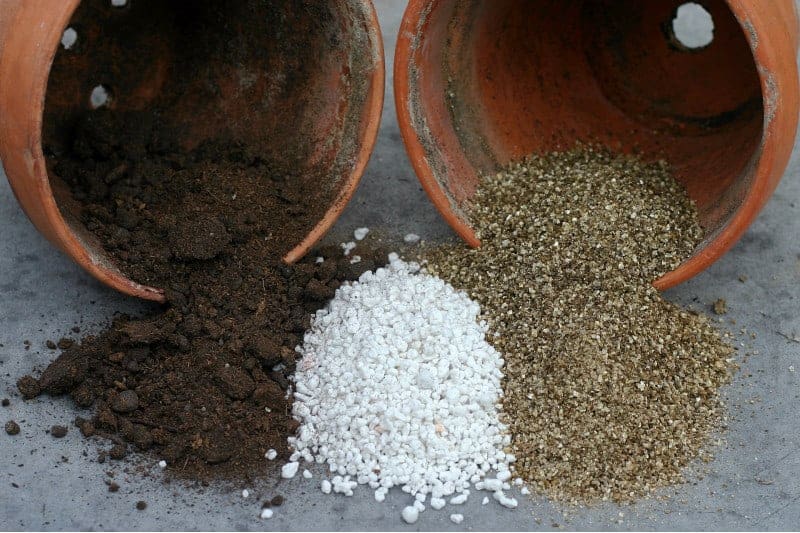
When you grow, Aloe Vera commonly grows in nutrient-poor soil, like sandy soil with drainage. Therefore, the important thing for the Aloe plant is a well-draining potting mix. Whether outdoor plants or indoor aloe plants, the soil requirements are the same.
We recommend a cactus potting mix mixed with coarse sand and perlite. The soil needs to be on the acidic side, about 6.0, but it can grow in neutral to alkaline soil.
Watering Outdoor and Indoor Aloe Plant
Aloe plants prefer regular watering, but the soil needs to dry out between watering. When the soil remains dry, the aloe leaf pucker shrivels up. So watering your plant will recover, and the same applies when watering too much.
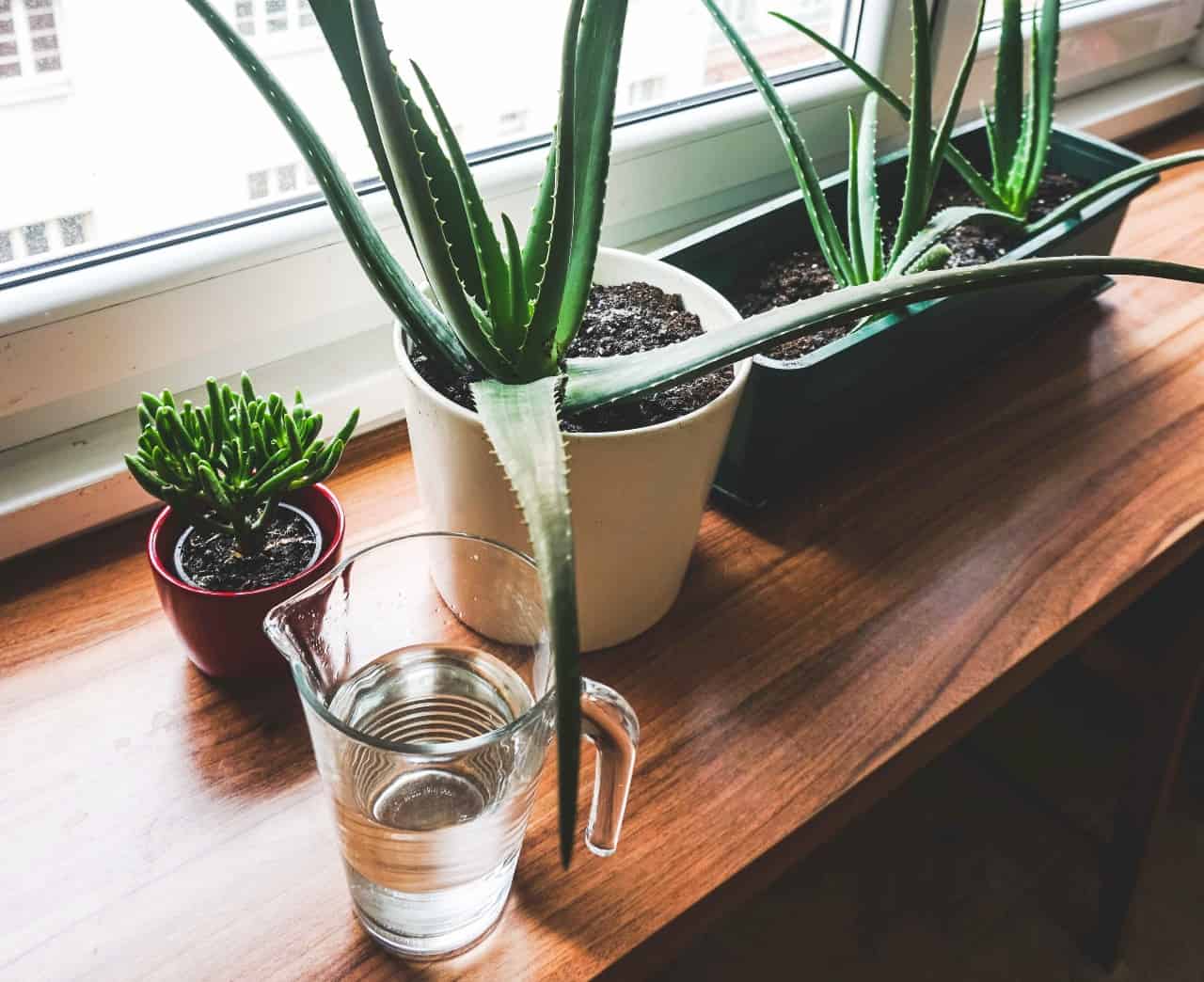
With overwatering, the aloe plant leaves turn yellow. Therefore, we do not recommend watering your outdoor aloe plants during the rainy season. Neither should you water in winter as the aloe plant goes dormant.
If you live in a rainy climate during winter, it helps provide your plant with some stones or gravel outdoors. It will allow the water to run away from your plant and helps prevent root rot.
Temperature & Humidity
Your aloe grows in a tropical, arid, or semi-tropical climate, and it helps to mimic the conditions for your plant to thrive. The recommended temperature is between 55°F and 85°F for most indoor plants.
You need not bring in your plant when you have these temperatures outside. While some aloe plants can tolerate some frost, growing aloe vera plants is one that cannot handle freezing temperatures. When planting aloe, they can handle dry air fine and need no added humidity.
Fertilizing Your Aloe Potted Plants
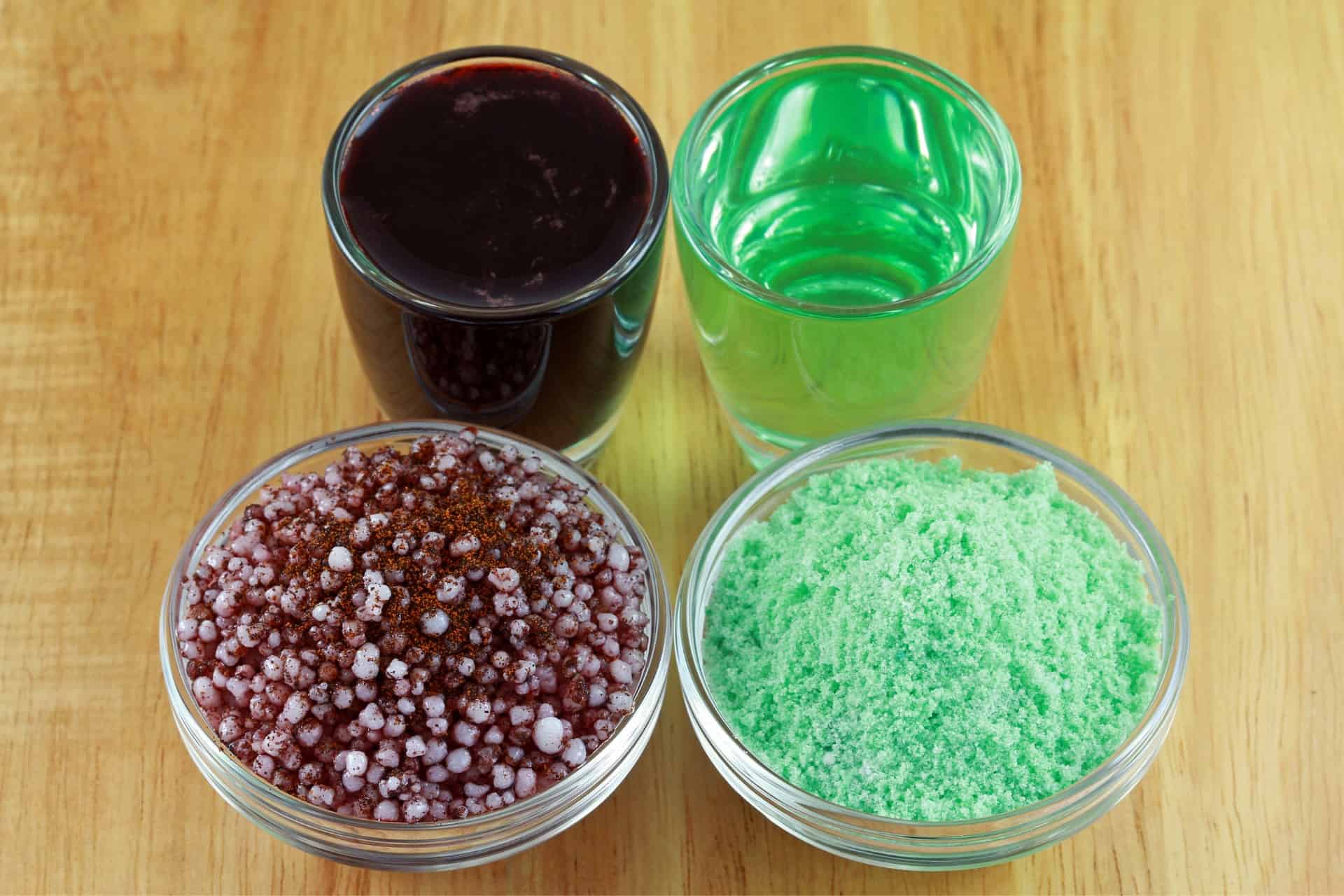
As the aloe can grow in direct sunlight in poor soil conditions, it naturally adapts even to desert soil and needs no added fertilizing. But you can feed your potted aloe in spring with a succulent fertilizer to give them a lush growth. We recommend a 10-40-10 feed diluted to half strength for yearly feeding.
You need not feed your outdoor aloes.
Pruning Aloe Plants
You only need to prune aloe plants when the leaves are dead or shriveled. Then, when you notice the outer foliage with brown leaf tips, it will eventually turn brown, and you can cut them back to the base.
How to Propagate Aloe Vera Plant?
Your parent plant develops aloe vera pups or offsets at the base you can remove.
Put on some gloves and prepare a terra cotta pot with potting soil.
Find the pups on the mother plant at the base, and with a trowel, pry them up by severing the taproot and connecting it to the parent plant.
Lay the offsets in direct sun at a window for a few days to callus over.
Plant the aloe vera pups in the prepared pot by covering the roots and backfilling them with the soil below the main crown.
Next, water your plant and leave it in bright light to develop a strong root system.
Aloe Vera Common Diseases And Pests
Whether your aloe plant is outdoors or indoors, it can become bothered by pests. These include aloe mites, mealybugs, and aloe scales. You can wipe the mealybugs with a cloth or spray them with water.
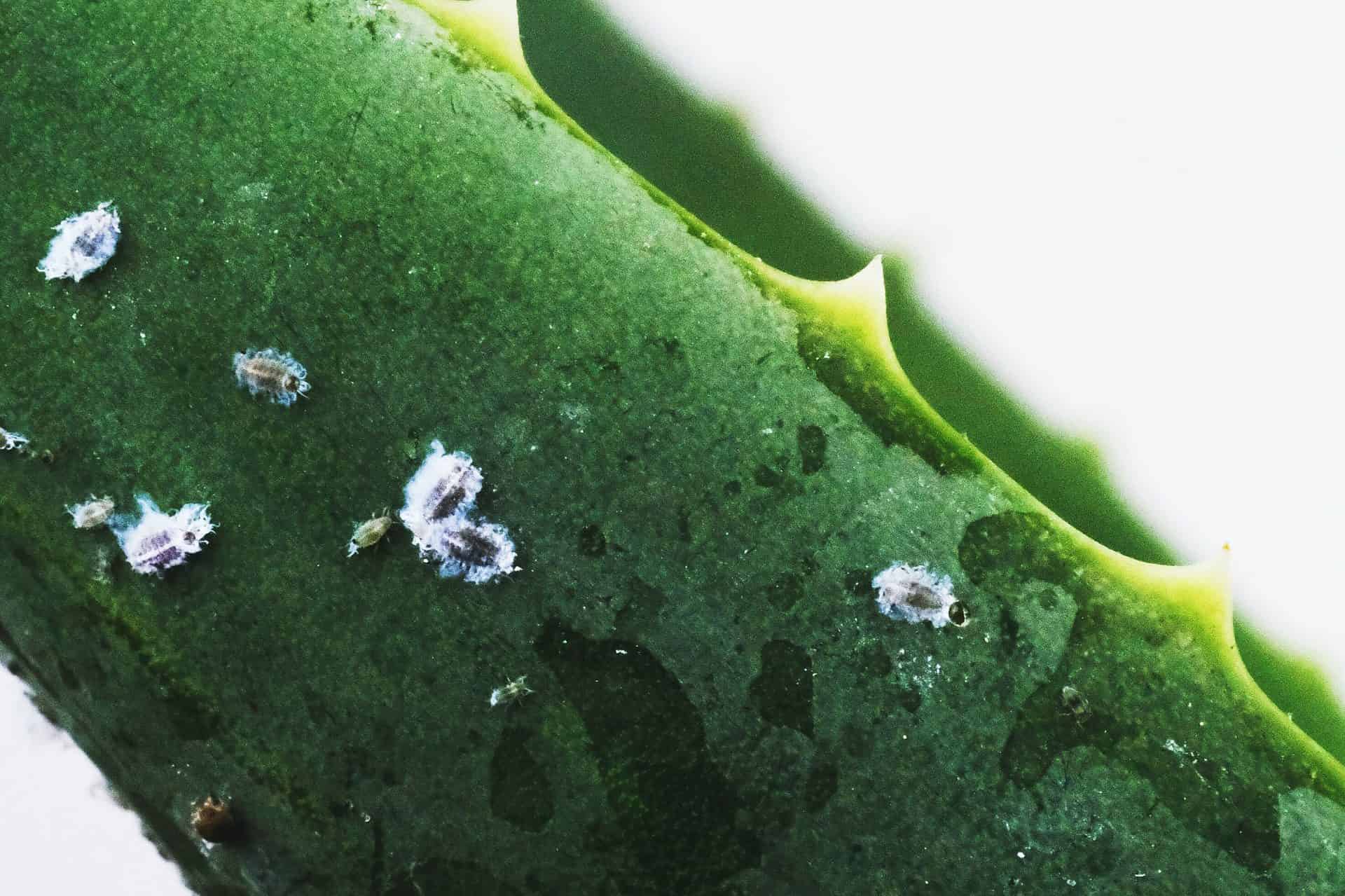
For scale, you can use insecticidal soap to spray the infected leaves while spider mites, the insecticidal solution, or neem oil help. Another concern is aloe rust caused by cold temperatures to humidity.
It starts with yellow spots on the foliage and turns brown. While it does not need a treatment, you still need to keep an eye on bacterial soft rot that is fatal for your plant.
Final Thought
These are some of the popular aloe cultivars you can grow at home. Regarding aloe vera care, the maintenance needs are similar in most varieties. So, check out these gorgeous succulents you can grow in the comfort of your home or garden today.
Whether you want to buy, sell or simply reach out to other plant enthusiasts, Plantly is the right place to be!


